Costume Party: Éric Rohmer, Swimsuit Edition
Costume Party is a monthly column exploring fashion, personal style, and historical aesthetics in film.
It’s officially summer, which means fashion websites and magazines are filled with swimsuits. This month’s Costume Party is taking a somewhat more highbrow look at this warm weather staple, with an overview of some of the many swimsuits in the films of the late great French New Wave director Éric Rohmer. In films from the 1960s through the 90s, Rohmer was essentially the auteur of swimsuits. Rohmer is known for films featuring attractive women chatting philosophically in calm settings (often lensed by master cinematographer Néstor Almendros) and swimsuits are not so much a mode of objectification here as a natural (and admittedly, often seductive) costume for such times and places.
Rohmer’s first cinematic swimsuits appear in his short Suzanne’s Career (1963). A modest patterned one-piece and a mod bikini make for good poolside lounge uniforms.
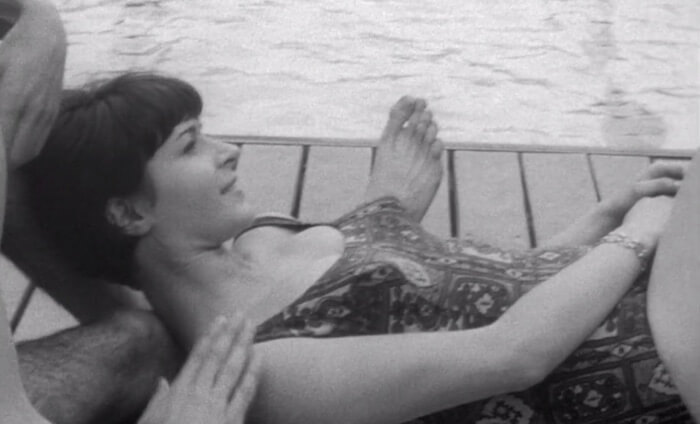
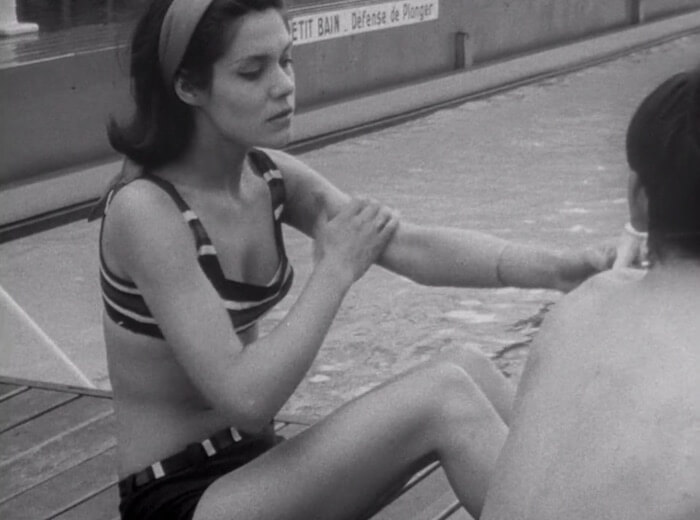

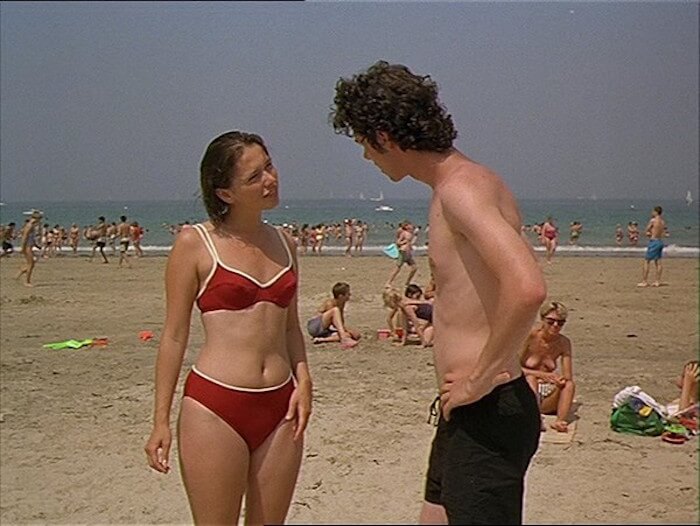

Earlier, Langlet wore other swimsuits in Pauline at the Beach (1983). These films, with “summer” and “beach” in their titles, deliver on the warm weather fashion premise. Pauline at the Beach sets up Pauline as the counterpoint to her older, more flirtatious cousin Marion (Arielle Dombasle). Pauline’s one piece isn’t quite as revealing as other Rohmer swimsuits, and Marion’s is clingier and more disco-ready.
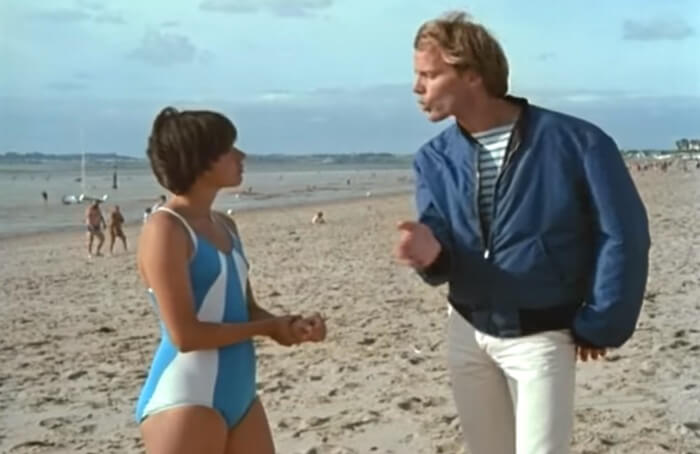

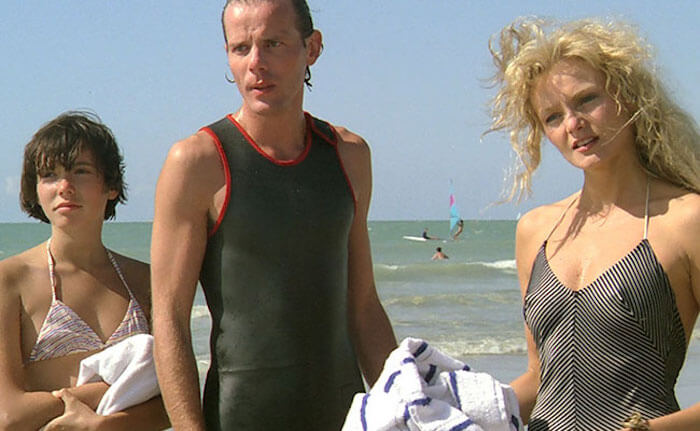

Guides to dressing like a Frenchwoman often emphasize simplicity. Simple monochrome swimsuits can be found in La Collectioneuse (1967) and Claire’s Knee (1970).
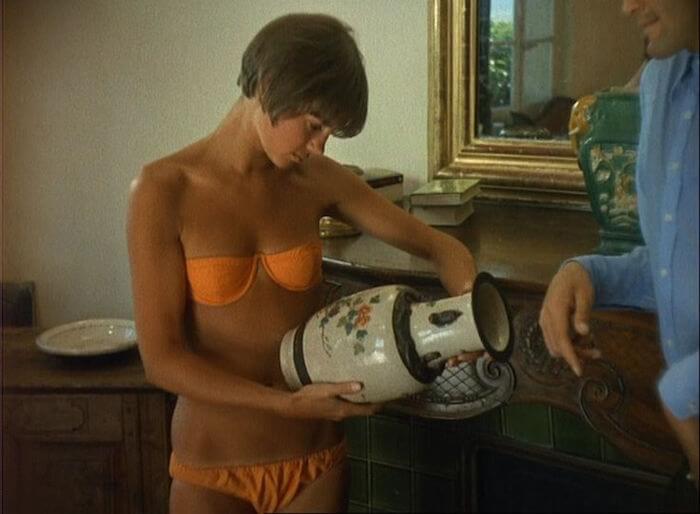

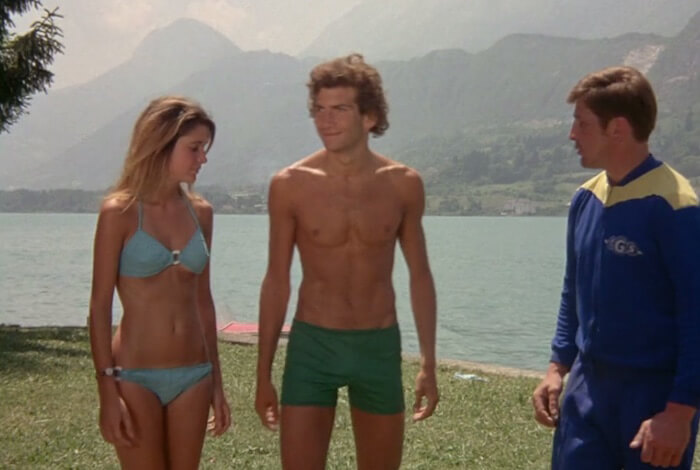

These swimsuits are ideal signifiers of sun-dappled sensuality. The colors are soft, blending with Almendros’ cinematography, and they are cut low, revealing lithe bodies that provoke men into moral questioning while the women keep their agency. Rohmer swimsuits often embrace imperfection. The orange bikini bottom in La Collectioneuse bunches slightly, and the bikini that Haydée (Haydée Politoff) wears in the film’s opening rides up and twists in the back. In the world of Rohmer such imperfections add a down-to-earth allure.
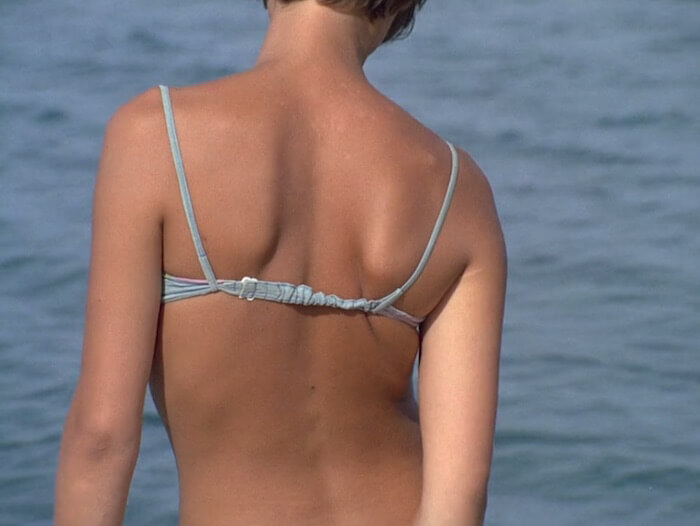

Rohmer shows this particular suit from a variety of angles – the better to see not only Haydée’s form, but also the swimsuit’s soft floral print.
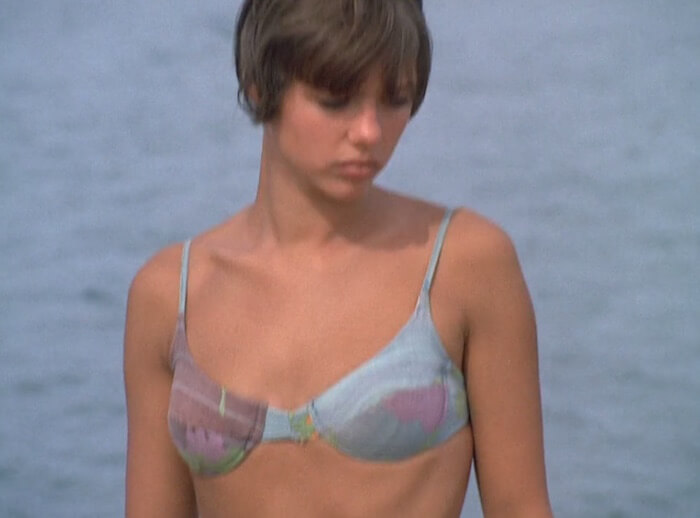

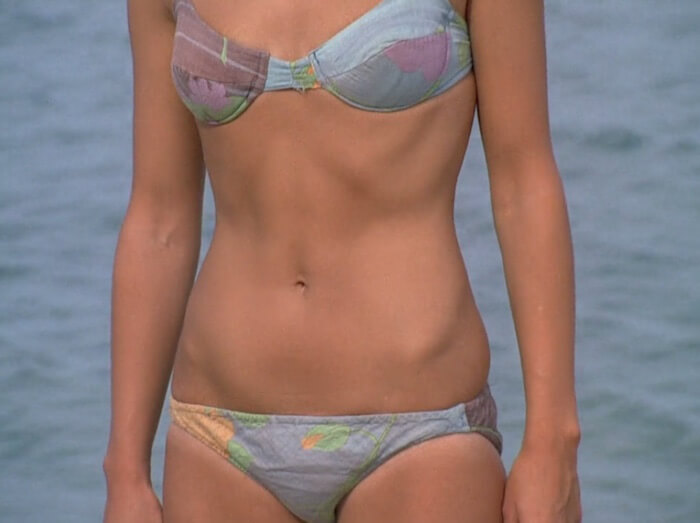

Later she wears a bikini with a too-big top. The gap between suit and skin suggests her insouciance. She doesn’t care about being too revealing and the sweet 1960s floral print keeps the sexiness from being aggressive.
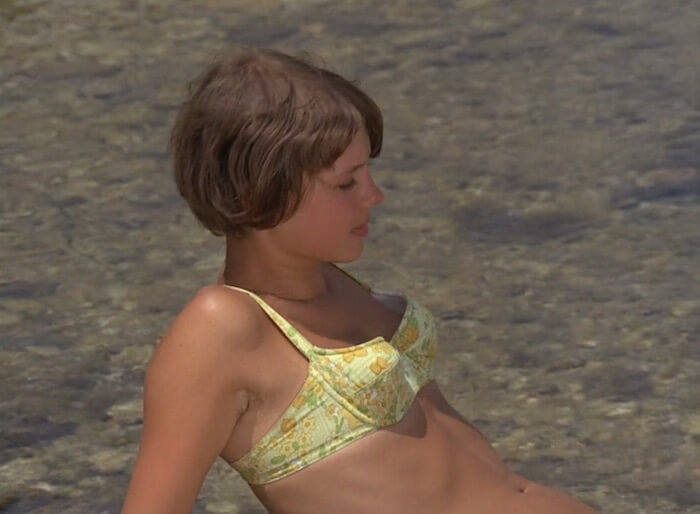

Perhaps the most novel swimsuit in Rohmer’s cinematic wardrobe is worn by Marie Rivière as restless traveler Delphine in The Green Ray (1986). She lounges on a crowded beach, lost in thought, clad in a navy one-piece with tie dye and horses. The suit is whimsical and while Rohmer’s swimwear is often used to seduce, this is never its sole purpose. In The Green Ray it contrasts with Delphine’s everyday wardrobe, and its rainbow colors suggest the natural spectacle of light she witnesses at the film’s end.


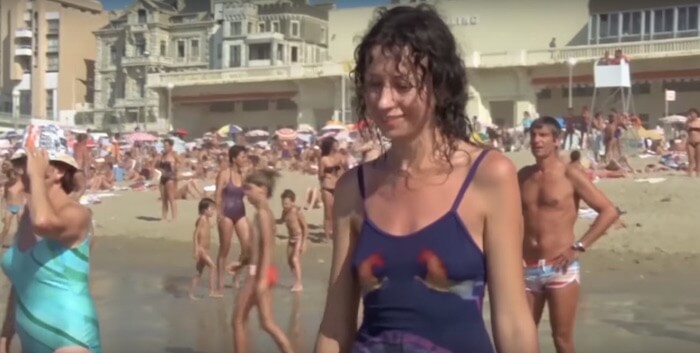

Rohmer’s films offer a cornucopia of swimsuit options for any beach outing. One piece or two piece, sporty or delicate, they’re all there, and worn with a memorable je ne sais quoi far more intriguing than something overtly glitzy and revealing.
You might also like 



















